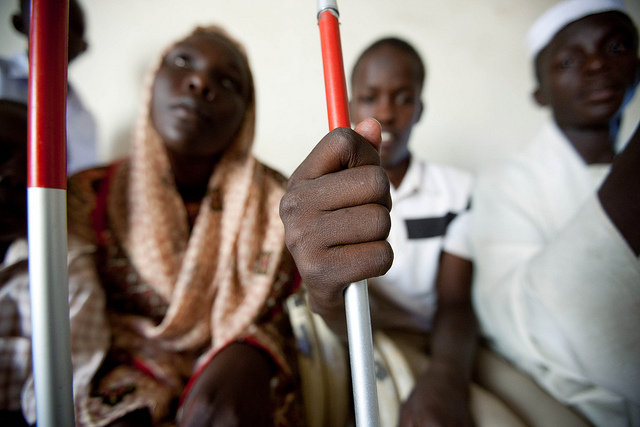By: Joshua Howgego
Send to a friend
The details you provide on this page will not be used to send unsolicited email, and will not be sold to a 3rd party. See privacy policy.
In an opinion piece for UK paper The Independent earlier this month, the politician David Blunkett backed the conclusions of an inquiry into the Department for International Development’s disability work and urged it to adopt a coherent disability strategy. [1] The government’s official response to the inquiry is due this week, SciDev.Net understands.
It will be important for this response — and, eventually a DFID strategy — to include a commitment to separate out data on aid interventions by disability, according to Emma Jolley, a research associate at Sightsavers, a charity that works to combat avoidable blindness in developing countries. Without this, she says, it’s impossible for an organisation to know whether its work is reaching different groups of disabled people.
Jolley tells me she is setting up a pilot study to disaggregate data by disability for two Sightsavers projects — an eye care initiative in India and another project working to fight neglected diseases that cause blindness in Tanzania — an exercise intended to help Sightsavers learn how best to do this.
“Until now, we haven’t really looked at how well people with disabilities are accessing our health programmes,” she says. “We haven’t used disability as a disaggregant in the data we collect.”
Few aid organisations currently break down the data they collect for evaluation by disability. Jolley says that’s no surprise as it’s not necessarily obvious how to classify people’s impairments. What exactly should be counted? And how can that be standardised, given that disability is understood differently by different cultures and individuals?
“But we have to start somewhere,” Jolley tells me. The Sightsavers project will use a list of questions developed by the Washington Group on Disability Statistics, which the UN has authorised to look into the issue of standardising disability statistics (see box). [2]
Box: Disability questions endorsed by the Washington Group on Disability Statistics |
|
Do you have difficulty seeing, even if wearing glasses? Do you have difficulty hearing, even if wearing a hearing aid?
Do you have difficulty walking or climbing steps?
Do you have difficulty remembering or concentrating?
Do you have difficulty (with self-care such as) washing all over or dressing?
Using your usual (customary) language, do you have difficulty communicating, for example understanding, or being understood? |
The questions are designed to measure various functional limitations disabled people’s experience, with possible answers being: no difficulty, some difficulty, a lot of difficulty or cannot do at all.
“The best way to have a reliable and comparable measure is to move away from this idea of ‘disability’ — because it’s such a loaded and contextually specific term — and move towards a more functional, limitation-based definition,” Jolley says.
“What we’re doing at the moment is really a pilot to understand the feasibility and the acceptability of these questions,” says Jolley. “We may even find that people don’t like being asked them and refuse to answer.”
But learning these lessons will be vital, she says, because “if we don’t know what the situation is, then we can’t improve it”.
Joshua Howgego is SciDev.Net’s deputy news and opinions editor.
References
[1] David Blunkett Disability and development: Why DFID must include those so often left behind (The Independent, 10 June 2014)
[2] Census questions on disability endorsed by the Washington Group (Centers on Disease Control and Prevention, accessed 24 June 2014)














